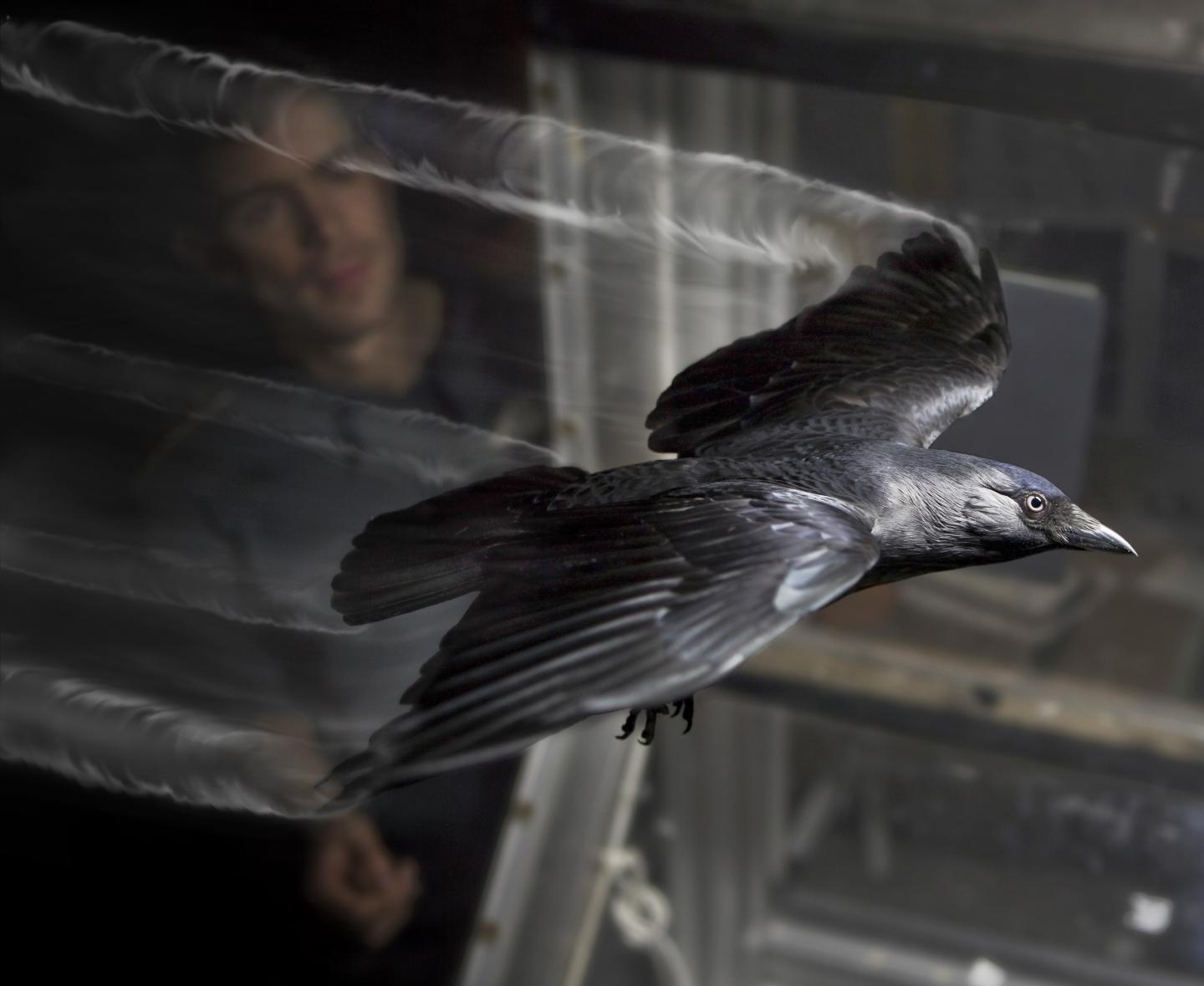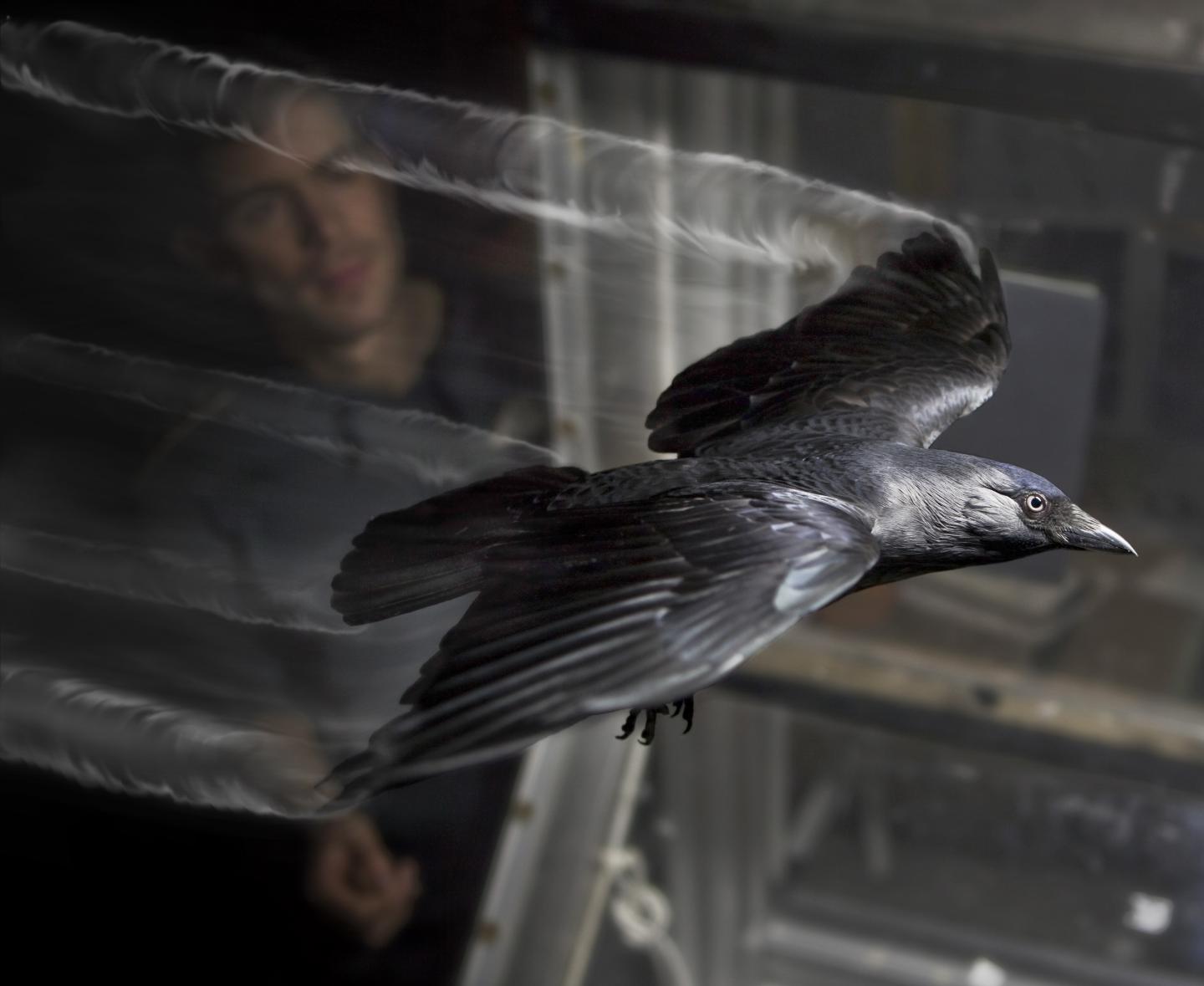
Credit: Photographer Aron Hejdström
For the first time, researchers have observed that birds that fly actively and flap their wings save energy. Biologists at Lund University in Sweden have now shown that jackdaws minimise their energy consumption when they lift off and fly, because the feathers on their wing tips create several small vortices instead of a single large one. The discovery could potentially be applied within the aeronautical industry.
Previously, multiple wingtip vortices have only been associated with large gliders such as eagles, vultures and storks. Now biologists Anders Hedenström, Christoffer Johansson and Marco Klein Heerenbrink of the Faculty of Science at Lund University in Sweden have discovered the same phenomenon in jackdaws, which flap their wings when they lift off and fly.
The experiments were conducted in a wind tunnel at the Department of Biology in Lund. The jackdaw lifted off and flew through a thin mist that reflects laser light, which is captured by advanced cameras. By using multiple images from several cameras, the researchers were able to build up three-dimensional images of the air flow around the jackdaw's wing tips.
"The feathers on the wing tips can be compared to the spread fingers of a hand. The wing tip generates several small air vortices instead of one large vortex, as on an aeroplane with rectangular or elliptical wing tips. It requires more energy and costs more to lift off when only one large wing tip vortex is generated", says Anders Hedenström, professor of theoretical ecology.
According to the researchers, their success in proving that not only large gliders generate several small vortices around each wing tip could mean that wing tips with slotted feathers originally evolved to make flapping active flight more efficient.
The aeronautical industry has realised that there is money to be made in reducing the strength of the wing tip vortex. Some planes are already constructed with wing tips that are bent upwards. This reduces the strength of the vortex and thereby fuel consumption.
Anders Hedenström believes that his and his colleagues' discovery could also be significant for the design of future drones.
"We could potentially build more efficient drones to fly with active wingbeats. Within a ten-year period, we could see drones which have the morphology of a jackdaw", he says.
The research findings have been published in an article in the Journal of The Royal Society Interface.
###
For more information
Anders Hedenström, Professor of Theoretical Ecology
Department of Biology, Lund University
46-46-222 41 42
46-70-543 19 36
[email protected]
Media Contact
Anders Hedenström, Professor of Theoretical Ecology
[email protected]
46-705-431-936
@lunduniversity
http://www.lu.se
Related Journal Article
http://dx.doi.org/10.1098/rsif.2017.0099





